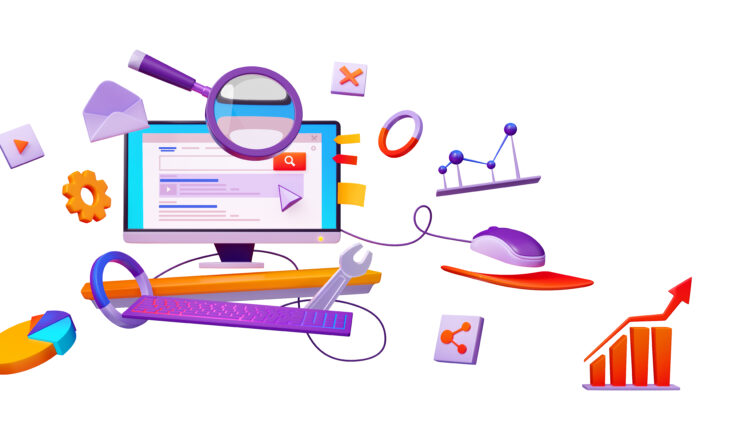Content is the Tony Bennett of the marketing world. It’s been around forever, but what a renaissance it’s experienced of late! Social media, marketing automation, long-tail searches and a more sophisticated communication plan mapping to the customer buying cycle are driving the need for a significantly greater volume and specificity of content. Of these drivers, aligning to the customer buying cycle is probably the least common today. I am not seeing a lot of organizations whose content plan is a direct reflection of a well understood customer buying cycle.
Many are creating white papers, demos, videos, podcasts and other assets because they are on a checklist of execution items for a given campaign or product launch. This lack of prescription is a recipe for spending a lot of time and budget on items that are not optimized for driving top of the funnel awareness or for creating and progressing pipeline. As Yogi Berra once said, “you’ve got to be very careful if you don’t know where you are going, because you might not get there”. So how do you adopt an approach that better incorporates the prospects’ content requirements as they go through the buying journey?
The Content Strategist is King
It starts with your organizational structure. Organizations who are doing this well have staffed the modern marketing role of Content Strategist. Its responsible for deeply understanding the buying process for your solutions and mapping the right assets to the right personas at the right time. Content Strategists often work with organizations such as ours to conduct the deep level of research needed to understand their buying cycle, the personas involved in it and the information sources and content they engage with throughout.
We strongly encourage you to add incremental headcount or shift existing resources to staff this role if you haven’t already. It is a glue role for creating a more customer-centric go-to-market strategy as well as driving the execution of not only content, but also an effective lead nurturing strategy. In the interim, we recommend a content strategy committee comprised of solutions/product marketing and demand generation individuals with a strategic mindset.
Loosening the Status Quo Early in the Buying Cycle
You know the person you meet at a party who talks about themself incessantly? You don’t want to be that guy when a B2B prospect first meets you. Early stage content should be much more about them, then about you. It should reflect your prospects’ key business imperatives that your solutions address. Industry or line of business content is a great way to speak their language and show that you understand their business.
The more focused the content the better, says Mike McAllister, Director of Content Strategy and Development at Demand Spring. “Social Media has conditioned us to shorter, more consumable content that is much more specific and focused on one topic.” The early stages are where third party content investments from credible sources is critical (e.g., analyst content that is not product focused, such as Forrester’s How Social Media is Changing Brand Building). Non-biased content has proven to be highly effective in loosening the status quo. Like the way we use Consumer Reports in the early stages of shopping for a new appliance, B2B buyers look for insight from credible, neutral sources.
That doesn’t mean that vendor content shouldn’t be part of the mix. It’s critical to show your subject matter expertise and ability to understand the business problems in this stage. A great example is Eloqua’s Grande Guides, such as their Grande Guide to B2B Content Marketing. They are all about best practices, not Eloqua’s products. They establish permission to sell product later. Asset types to use early on include industry briefs, buying-agenda focused white papers, Webinars and videos (with customers discussing how you have helped them address their business problems), infographics and the ongoing use of social media.
Driving Solution Preference in the Middle Stages
This is where most of you likely have a pretty strong roster of content. One thing to ensure here – make sure you have distinct content for both business and technical evaluators. For business evaluators, you should be addressing ease of use, training, the interoperability with other core systems they use (does it double the workload or reduce processes for them?) and the application of the technology. “A lot of people are still stuck in vey product-focused content. I love case studies. They are a great way to put a face to a problem you have”, states McAllister.
For IT, items such as scalability, security, performance and technical integration information is critical. And remember it’s not just the product they are evaluating, but how easy it will be to work with your company, what your support reputation is like (very easy to find out through social media) and what kind of a partner ecosystem you have for adding apps and providing service. Asset types in these stages that perform well include whitepapers (product, technical, service, etc.), e-books, playbooks, guides, demos, analyst research (focused on solutions), live events and data sheets.
Closing the Deal
Late stage content is all about validation and justification, professional and personal risk mitigation. This is where customer case studies, ROI data and analyst research (e.g. Gartner Magic Quadrants) is critical. One of my favorite pieces of late stage content is Nucleus Research ROI reports. Nucleus is an analyst firm based in Boston who produce these fantastic client ROI pieces, detailing the return and time to payback for a given technology. They are short (~5-6 pages), easy to read, and they use the American Institute of Certified Public Accountants methodology. Dropping one of these pieces into the late stages of a buying cycle is a great way to get the ball across the goal line.
Getting Started
You likely have a fair amount of content that plugs in nicely to some of the stages in your customers’ buying cycle. Your starting point should be an audit of your existing content against the customer buying cycle. Which stages are well supported? Where are the gaps? This is where a strong Content Strategist is required to understand the buying cycle thoroughly and map the required content throughout it. Following the audit, the strategy phase is where you determine what needs to be developed and what needs to be purchased (third-party content). Start with what you have and build on it states McAllister, “Create an editorial calendar and be systematic about executing against your biggest content gaps. Make it topical and engaging. Tell a story with your content.”
Your Turn
Please share your content strategy insights. What has worked really well for you in various stages of the buying cycle?






